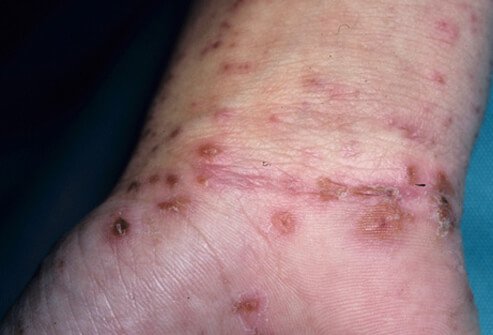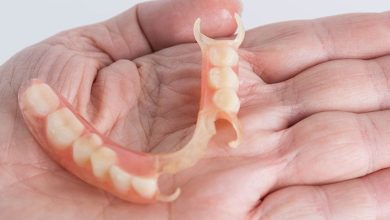SCABIES NATURAL REMEDY, CAUSES, PREVENTION, SYMPTOMS
Everything You Need to Know About Scabies


Scabies is an itchy skin condition caused by a tiny burrowing mite called Sarcoptes scabiei. Intense itching occurs in the area where the mite burrows. The urge to scratch may be especially strong at night.
Scabies is contagious and can spread quickly through close physical contact in a family, child care group, school class, nursing home or prison. Because scabies is so contagious, doctors often recommend treatment for entire families or contact groups.
Scabies can be readily treated. Medications applied to your skin kill the mites that cause scabies and their eggs. But you may still have some itching for several weeks after treatment.
Table of Contents
Types of scabies
There’s only one type of mite that causes a scabies infestation. This mite is called Sarcoptes scabiei. However, these mites can cause several types of infestations.
Typical scabies
This infestation is the most common. It causes an itchy rash on the hands, wrists, and other common spots. However, it doesn’t infest the scalp or face.
Nodular scabies
This type of scabies may develop as itchy, raised bumps or lumps, especially in the genital areas, armpits, or groin.
Norwegian scabies
Some people with scabies may develop another form of scabies known as Norwegian scabies, or crusted scabies. This is a more severe and extremely contagious type of scabies. People with crusted scabies develop thick crusts of skin that contain thousands of mites and eggs.
Causes
The eight-legged mite that causes scabies in humans is microscopic. The female mite burrows just beneath your skin and makes a tunnel where it deposits eggs.
The eggs hatch, and the mite larvae work their way to the surface of your skin, where they mature and can spread to other areas of your skin or to the skin of other people. The itching of scabies results from your body’s allergic reaction to the mites, their eggs and their waste.
Close physical contact and, less often, the sharing of clothing or bedding with an infected person can spread the mites.
Scabies prevention
The best way to prevent getting scabies is to avoid direct skin-to-skin contact with a person known to have scabies. It’s also best to avoid unwashed clothing or bedding that’s been used by a person infested with scabies.
Scabies mites can live for three to four days after falling off your body, so you’ll want to take certain precautions to prevent another infestation. Make sure to wash all of the following in hot water that reaches 122°F (50°C):
- clothing
- bedding
- towels
- pillows
These items should then be dried in the dryer on very high heat for at least 10 to 30 minutes.
Anything that can’t be washed should be thoroughly vacuumed. When you’re finished vacuuming, throw out the vacuum bag and thoroughly clean the vacuum with bleach and hot water.
Symptoms
Scabies signs and symptoms include:
- Itching, often severe and usually worse at night
- Thin, irregular burrow tracks made up of tiny blisters or bumps on your skin
The burrows or tracks typically appear in folds of skin. Though almost any part of the body may be involved, in adults and older children scabies is most often found:
- Between the fingers
- In the armpits
- Around the waist
- Along the insides of the wrists
- On the inner elbows
- On the soles of the feet
- Around the breasts
- Around the male genital area
- On the buttocks
- On the knees
In infants and young children, common sites of infestation usually include the:
- Scalp
- Palms of the hands
- Soles of the feet
If you’ve had scabies before, signs and symptoms may develop within a few days of exposure. If you’ve never had scabies, it can take as long as six weeks for signs and symptoms to begin. You can still spread scabies even if you don’t have any signs or symptoms yet.
Natural Remedy
1. Aloe vera
This gel is known for its ability to ease skin irritation and burning, but a small study found that aloe vera was just as successful as a prescription treatment at treating scabies.
Just be sure to buy pure aloe vera, not an aloe vera-infused product.
2. Tea tree oil
Tea tree oil may treat scabies, while also easing itching and helping eliminate the rash. However, it won’t work well on mites that are burrowed into your skin.
3. Essential oils
Clove oil is a natural bug killer, so it stands to reason mites might die in its presence. Other essential oils, including lavender, lemongrass, and nutmeg, could have some benefit at treating scabies.
4. Capsaicin cream
Though it will not kill the mites, creams made with capsaicin from cayenne peppers may relieve pain and itching by desensitizing your skin to the bothersome bites and bugs.
5. Apply soothing lotion
Calamine lotion, available without a prescription, can effectively relieve the pain and itching of minor skin irritations.
6. Cool and soak your skin
Soaking in cool water or an oatmeal bath, or applying a cool, wet washcloth to irritated areas of your skin may minimize itching.
7. Take antihistamines.
At your doctor’s suggestion, you may find that over-the-counter antihistamines relieve the allergic symptoms caused by scabies.
For any important information please contact us Email GadgetsNg info@gadgetsng.com
[Button id="1"]



